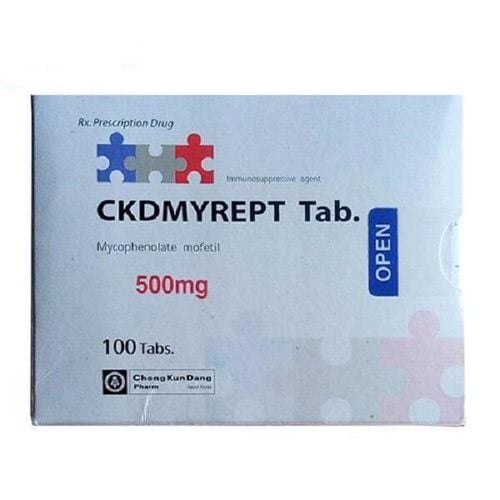This is an automatically translated article.
Globally, primary liver cancer ranks 5th in men and 7th in women in common cancers and ranks 3rd in cancer-related deaths.1. Classification of primary liver cancer
Liver cancer occurs when liver cells begin to grow abnormally and form a malignant tumor. There are two types of liver cancer: primary liver cancer and secondary liver cancer.
Primary liver cancer, also known as hepatocellular carcinoma, is a common cancer in the world and in Vietnam. The cause of the disease is clearly related to hepatitis B virus, hepatitis C, liver fluke, the role of aflatoxin B1, alcohol. The prevention of liver cancer can be completely prevented by hepatitis vaccination, especially pregnant women, children and lifestyle changes.
Primary liver cancer is further subdivided into 5 types based on where the cancer originates in the liver:
Hepatocellular carcinoma (HCC): starts in the liver cells and it is more common in men gender and people with cirrhosis. This is the most common of the primary liver cancers (about 90% of cases). Fibrous plate hepatocellular carcinoma (FHCC): this is a rare classification of hepatocellular cancer. This type of cancer usually develops in the background of normal liver tissue. Cholangiocarcinoma (CC): This is a rare cancer (accounting for about 5-10% of cases). Cancer cells develop from bile duct epithelial cells. Hepatoblastoma: this is a rare cancer in children (about 0.5-1% of cases). Vascular sarcoma: This is a very rare cancer that develops from blood vessel cells in the liver.
2. Risk of primary liver cancer

Nguyên nhân gây ung thư gan nguyên phát
Most liver cancer patients have one or more of the following risk factors:
Cirrhosis: is a slowly progressive condition that causes fibrous scarring in the liver parenchyma. There are many causes of cirrhosis, but it's usually alcohol and hepatitis C. However, only a small number of cirrhotic patients progress to liver cancer. Long-term hepatitis B or hepatitis C infection: it usually takes about 20-30 years after infection for liver cancer to appear. Viral hepatitis is very common in Asia and Africa. A lot of young children here have hepatitis B, which is why liver cancer in these areas is common in young people. Ingesting certain poisons or toxins. For example, aflatoxin is a common contaminant in certain foods such as moldy peanuts. This situation mainly occurs in developing countries. Some chronic inflammatory conditions of the intestinal tract, such as ulcerative colitis, slightly increase the risk of cholangiocarcinoma. Some evidence suggests that smoking may increase the risk of liver cancer. Parasitic infection (liver fluke). Primarily occurring in Africa and Asia, the risk of cholangiocarcinoma is increased.
3. Characteristics of primary liver cancer
In the early stages, the person may have no symptoms. As the disease progresses, the first symptoms may be vague and unclear, such as feeling unwell, nausea, loss of appetite, weight loss, and fatigue. Many people with primary liver cancer already have symptoms related to cirrhosis. Therefore, if you are suffering from cirrhosis and your health deteriorates quite quickly, it is likely that liver cancer has appeared.

Triêu chứng ung thư gan nguyên phát: chán ăn, sút cân và mệt mỏi
When liver cancer is more advanced, specific symptoms may appear such as:
Abdominal pain at the site of the liver. Jaundice of the skin and mucous membranes. Symptoms begin to appear first in the whites of the eyes, then gradually yellow all over the body. Jaundice caused by cancer causing blockage of the bile duct is bilirubin that is not excreted into the intestines and seeps into the bloodstream. Itchy skin. Abdomen is enlarged, which can be caused by an enlarged cancer or by an accumulation of fluid in the abdomen caused by liver dysfunction. In some cases, patients may have fever due to abdominal bleeding due to ruptured liver cancer
4. Treatment of liver cancer
Surgery Surgery to remove the cancer is the treatment of choice for the complete treatment of cancer if it is still possible. This method is performed when the tumor is not too large, has not spread beyond the liver and the remaining liver after resection is still sufficient to take care of its function. The remaining liver tissue will regenerate to compensate for the excised liver after a few weeks. However, this method cannot be performed if the tumor is too large and the liver is severely cirrhosis.
Liver transplantation is also a radical treatment option but is only suitable for a very small number of cases.
Few other surgeries play a palliative role. For example, surgery to place a bile duct when there is a biliary obstruction due to cancer invading the bile duct to treat jaundice, placement of a tube to drain fluid through the abdominal wall to relieve ascites.
Chemotherapy Chemotherapy is the use of anti-cancer drugs to kill cancer cells or to stop them from growing. This method cannot cure cancer, but it can reduce the size of the tumor and thereby slow the progression of the disease.
Many new drugs are being studied for the treatment of liver cancer such as Sorafenib which is a multi-targeted Kinase inhibitor. It interferes with the growth of cancer cells. Research shows that sorafenib may be beneficial for patients with advanced liver cancer.
In general, primary liver cancer has a rather poor prognosis. People with liver cancer often have poor health due to cirrhosis of the liver. Only a small number of patients have a chance of being completely cured by surgical resection or liver transplantation. When a complete cure is no longer possible, other methods can only slow the progression of the disease.
When you see the above symptoms, you need to see a doctor for timely treatment to avoid the worst.
Please dial HOTLINE for more information or register for an appointment HERE. Download MyVinmec app to make appointments faster and to manage your bookings easily.













